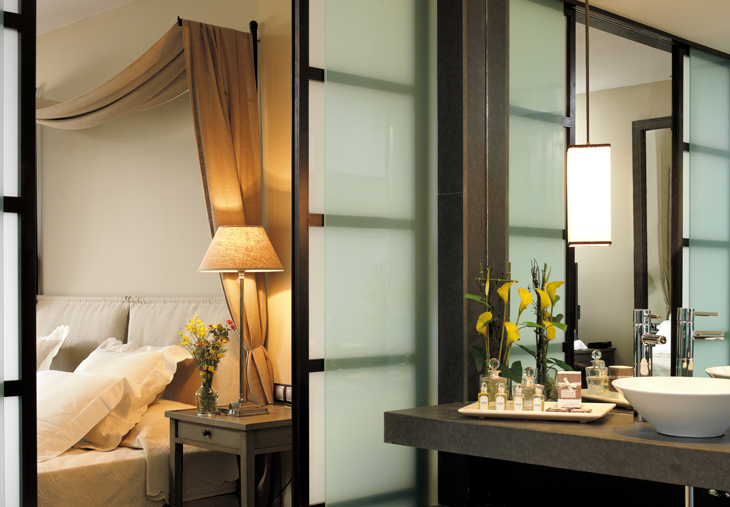FABRICS OF INDIA
For us, at the Asia Gardens 5-star Hotel & Thai Spa, as well as for many people, fabrics are one of the wonders of India, and that is the reason why we would like to make a special mention to them on our blog.
There may not be a place in the world with such vast and creative production of fabrics as it is India. Nowadays, there are more than 10 million weavers, fabric dyeing specialists, embroiderers and spinners all around India, Pakistan and Bangladesh, using designs full of patterns, vitality and colour.
Despite the advances in technology of textile development, when manually handcrafting fabrics there are a series of traditional techniques that have remained in India.
The most common and traditional techniques to decorate fabrics in India are:
1. Weaving
This type of decoration is used on elaborate designs directly on the fabric. A lot of fabric is used when working these designs, hence the high cost of fabrics which are more expensive than average as more time and skill are required.
2. Dyeing and pattern
In India people are true masters of this art and they apply many different techniques.
“Batik dye” or reserve dyeing consists of applying layers of wax over the parts of the fabric that you do not wish to dye. This process allows you to use layers of colour.
“Bandhani dye”, this is also a reserve dyeing technique although much more elaborate. It is mainly used in Gujarat and Rajasthan, and generally on cotton and silk fabrics.
Using patterns is the oldest method of decorating fabric. There are two ways of doing it: “block pattern” which consists of printing patterns on linen, cotton or silk manually, using wooden stamps. And “Rowan pattern” , originally from the north of Gujarat, where they use a glossy paste made of castor or safflower oil mixed with water, chalk and a colouring pigment to create a dense colorant. The paint is applied on the fabric using a splinter, a roller or a metallic block. Flower and geometrical patterns are the most commonly used.
3. Embroidery
This type of decoration also uses different methods and styles such as “Aari embroidery”, also known as “Zari” when combined with Golden threads; “embroidery with mirrors” which dates back to the 18th Century, used by the Persians; “Kantha embroidery” which consists of simple patterns using different colour thread; “Chikan embroidery” brought into the country by the wife of a Mongolian emperor which ended up becoming quite popular; “Zardozi embroidery”, the most popular style nowadays, used on bride dresses, including metal, pieces of glass, pearls and beads.
These dyeing and pattern methods are identity symbols of India. Walking around the streets of India, you can witness an explosion of colour that has crossed borders.
At the Asia Gardens 5-star Hotel & Thai Spa we have been inspired by such an explosion of colour and tradition from the Asian continent, and we have created an area where you can live a true Asian experience in the Mediterranean. How about a visit? www.asiagardens.es/en



